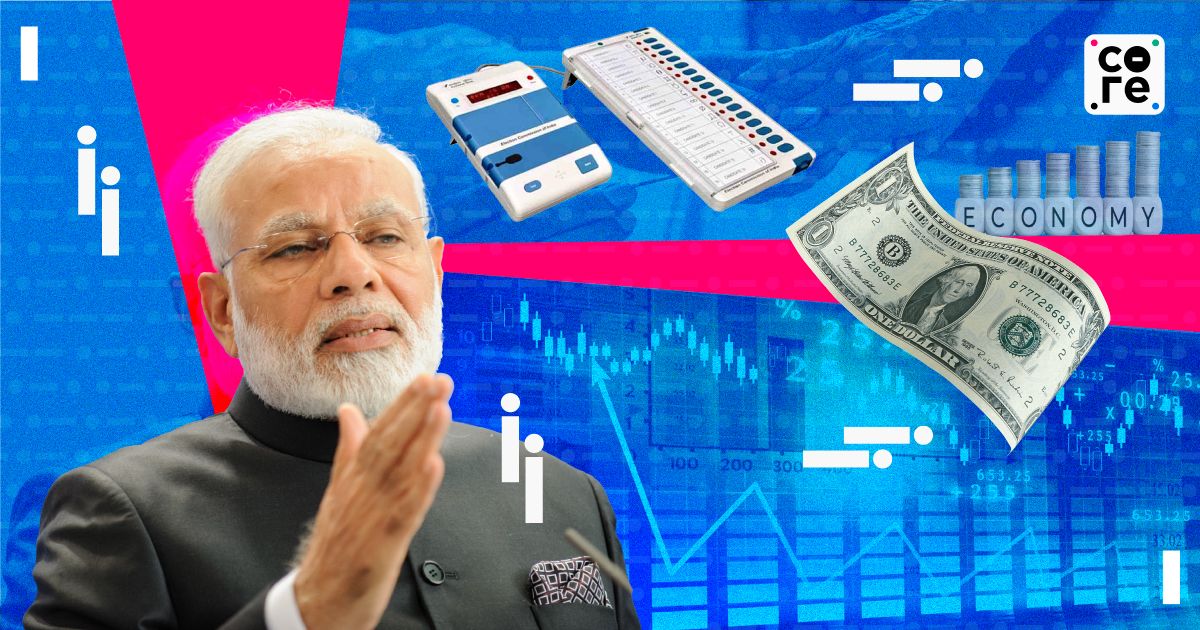Late last month, as A-listers flocked to Jamnagar for the big Anant Ambani-Radhika Merchant pre-wedding festivities, Reliance Industries and The Walt Disney Company announced a “strategic joint venture” worth $8.5 billion by merging the businesses of Viacom18 and Star India, effectively building a sports and entertainment behemoth, subject to the conclusion of the deal (Q4 2024 or Q1 2025) and regulatory approvals. Per a company release, the joint venture would be helmed by Nita Ambani, with Uday Shankar as vice-chairman.
To paint a picture, the combined entity (Viacom-Star) could have a market share of over 85% of India’s monthly active over-the-top platforms user base, per research organisation Bernstein’s analysts, while also potentially commanding a near 50% share of India’s broadcast market. And here’s the clincher: an over-40% control of the advertising market across linear TV and streaming combined, according to analysts at investment banking group Jeffries, which could have a significant say in monetisation.
But sports is where this deal becomes even more significant, effectively creating a never before seen one-stop-shop across cricket, football, hockey, and tennis, to name some. One analyst The Playbook (a publication by The Core) spoke to estimates that the Viacom-Star entity will hold an approximate 93% across all sporting properties broadcast in India. The remaining 7%, according to other analysts we interviewed, are distributed between SonyLIV (England cricket, WWE, Tennis, European Football, Saudi Football, and domestic non-cricket leagues such as volleyball), FanCode (T20 leagues in Bangladesh, Pakistan, and New Zealand, as well as international cricket matches played in Bangladesh and the West Indies), Amazon Prime (New Zealand cricket), and Zee5 (ILT20).
“It might look like a retreat, but if you think strategically, it’s a decent outcome for Disney. They get to remain in India at a time when the economics, particularly with sports, are off the roof with Reliance’s entry. This still gives them a fair shot at the market by being involved,” a leading media observer aware of deal developments told The Playbook.
The Playbook spoke to several industry experts, analysts, and media observers who requested to remain anonymous as they are not authorised to speak to the media.
The Deal That Forced The Hand
To know how we got here, we need to go back a couple of years to when the Indian Premier League’s (IPL’s) broadcast rights were auctioned.
On June 15 2022, minutes after Viacom18 agreed to shell out Rs 23,758 crore to bag the digital rights of the IPL for the 2023-2027 cycle, Rebecca Campbell, Disney’s then-chairman for international content, stated in a company release that the entertainment giant “chose not to proceed with the digital rights given the price required to secure that package.”
Campbell was putting on a brave face, even as Disney secured the TV rights for the tournament paying Rs 23,575 crore. Per Disney’s calculations at the time, the digital rights of a marquee international sporting property were pivotal to then-CEO Bob Chapek’s subscriber target of 230-260 million (a number later revised to 213 million) for its streaming service Disney+ by September 2024. That number, Chapek believed, could be achieved even if Disney didn’t prevail in the IPL auctions.
Both Chapek and Campbell have moved on from Disney since, but as time wore on, it became clear that defending the IPL rights was pivotal to Disney’s streaming ambitions. From the last quarter of 2022 until Q3 2023, Disney+Hotstar, its streaming service in India and Southeast Asia, saw an exodus of 12.5 million subscribers, most of which are directly attributable to the absence of the IPL from the streaming service. Hotstar did gain some 7,00,000 subscribers in the quarter ending December 31, 2023, but the damage was done.
New ‘Home Of Cricket’
The defeat at the auction table meant that not only did Disney’s once-formidable cricketing wall crumble, but also, it was forced to pay more than double the asking price to retain marquee properties such as events hosted by the International Cricket Council (ICC), besides bagging rights to broadcast international matches played in Australia and South Africa to Indian audiences. At the time, it held rights to international, domestic, and women’s cricket matches hosted by the Board of Control for Cricket in India (BCCI). But even then, the emerging feeling was that it would not go full-throttle to defend the same when it came up for renewal in 2023.
It didn’t. Viacom18’s successful Rs 5,963-crore bid for both broadcast and digital rights would mean that it cemented its place as the proverbial “home of Indian cricket”—now with a portfolio that mirrored Disney until summer 2023. Add the Women’s Premier League (WPL) rights to the mix, and Viacom18 is officially the destination for some of the sport’s most-watched and therefore better-monetised properties.
With the Disney merger, barring English and New Zealand cricket (among major cricket-playing countries), and other minor global T20 leagues, the merged entity will become the destination for not just Indian cricket, but also the game in general.
“While it is still early days, JioCinema, or whatever they choose to call it, could become the primary streaming outlet for the sport, while Star could become the linear TV destination. If anything, this plays to their respective strengths,” says a media industry expert from a Big Four consulting firm.
Just last week, we told you about how prudence might be the dominant theme in cricket advertising for 2024. But in the coming years, with multiple marquee properties—Indian cricket, IPL, WPL, and ICC events —under their wing, Viacom and Star will likely consolidate their monetisation efforts. “This combined entity could have a compelling position against advertisers, saying that if you don’t advertise with us, you are missing out,” the expert quoted above also said.
The Numbers
Having committed over $10 billion in broadcast rights (IPL, ICC, BCCI, WPL, and other licensing deals for sports leagues), it is unlikely that Viacom-Star will make money in the near term. Disney, for one, headed into this merger on the back of ballooning losses for its sports business in India despite an uptick in revenue, thanks to the 2023 ICC World Cup. The outlay on sports rights has, in the last several years, been an Achilles heel for the company.
In last month’s quarterly earnings, the company revealed that Star’s sports business had suffered an operating loss of $315 million in Q1 FY24, a year-on-year increase of 144% from $129 million. This, it stated, was due to “the airing of the ICC World Cup in the current quarter compared to the ICC T20 World Cup in the prior-year quarter, which resulted in an increase in programming and production cost attributable to higher average costs per match and more matches aired.”
Its revenue also increased by 71% to $399 million in Q1 FY24 (from $233 million in Q1 FY23) predominantly due to advertising revenue growth. More losses could be in the offing, with Zee’s non-payment of a $200 million instalment for the $1.4 billion deal it signed with Disney to sub-license TV rights for ICC events.
“This deal will be the loss leader for the combined entity. In the sense that helps consolidate viewership and garner more eyeballs, but it is unlikely that it will make money from sports,” says a second expert from another Big Four consulting firm who follows developments in the space closely.
A recent report by research and advisory firm Media Partners Asia estimated that the merger will create a profitable entertainment business ($600 million in EBITDA on $1.3 billion revenue in the financial year ending in March 2024), but sports ($600 million loss on revenues of $700 million) and streaming ($800 million revenue with an EBITDA loss of $150 million) could still be loss-making for the same period.
“We could see the typical Reliance/Jio playbook being deployed at least for the current cycle, i.e. get into a segment, trigger a price war, and then increase tariffs as they’ve done with Jio in a bid to make money. There won’t be initial pressure but eventually, they could be making some money,” the second expert added.
The (Non-Existent) Opportunity
The fragmentation of non-cricket properties could impede Viacom-Star’s challengers in the near term. “Even if Sony has deep pockets, its ambitions in the sports space have been declining. But it could open up opportunities for someone like Amazon or Netflix to build a presence in non-cricket sports. Even that, given the concentration of cricket in India, will be a moonshot,” says the first media expert quoted above.
It could, however, come sooner for Sony when the Netflix agreement with WWE comes into effect in 2025. Netflix will distribute WWE’s programming across international markets, including India, which is also among the popular wrestling property’s leading global markets. Sony is also likely to focus heavily on regional language content, which effectively allows Viacom-Star to have a free run in Hindi and sports, both spaces in which they dominate.
“The combined entity will make a killing on this. Also, sports is a space where you need to have some content all through the year. It can’t be too fragmented. There could be some opportunities outside of cricket, say global tournaments such as the UEFA Champions League and European Championship, but these two pretty much have their bases covered there too,” says the second media expert.
All of which begs the concerns around antitrust. There is some emerging consensus within the industry that Viacom-Star would either have to divest some TV channels (in specific markets) or sub-license some properties to rivals to satisfy regulators.
That won’t be a problem once these rights cycles expire in 2027 (or 2028), when analysts expect a return to “rational bidding” for rights. “You won’t see a 3x jump like we did in 2022. It will be more incremental—a 5-15% jump in prices,” the second expert quoted above concludes.
While there is still time for 2028, by this time next year, this formidable behemoth will have the first taste of the coming windfall.





